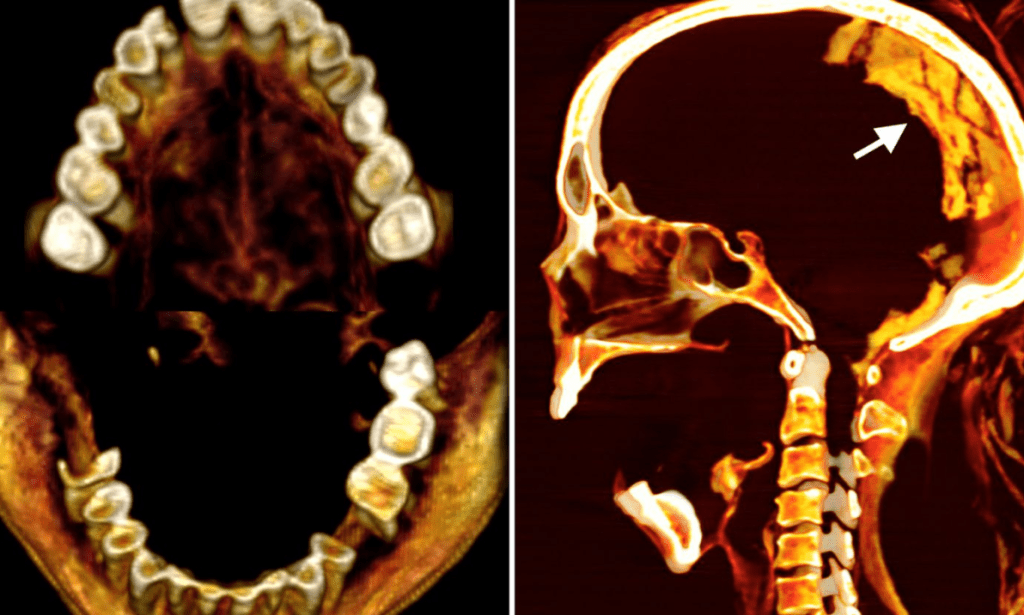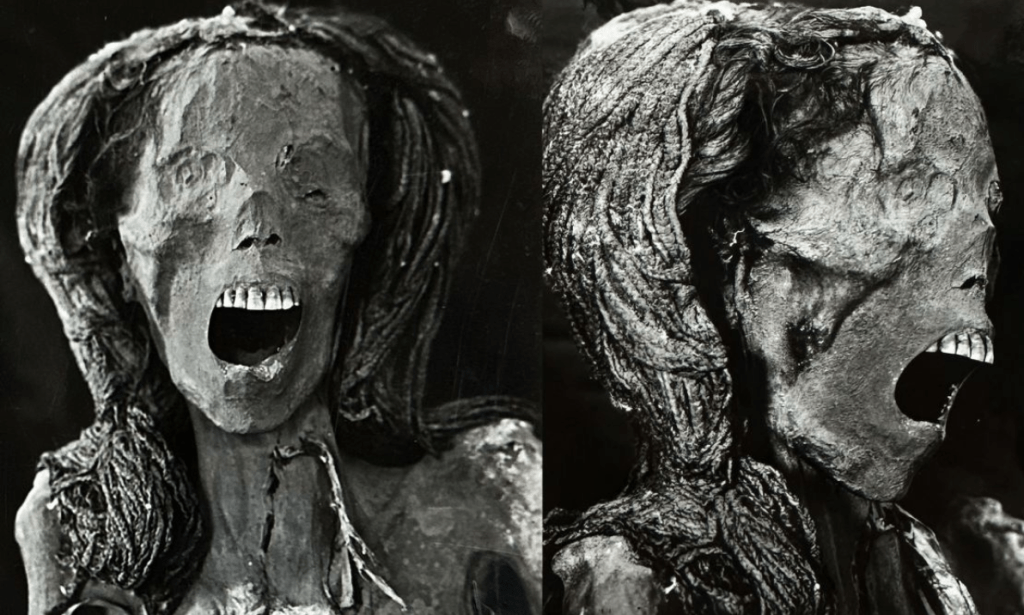Startling, shocking, and scary, with her mouth agape, is a mummy that has left scientists and archaeologists puzzled for some time. Back in 1935, a 1500 BC mummy was discovered at Deir Elbahari near Luxor.
She wasn’t like any other mummy, as her face was strewn in agony, with her mouth hanging open, as though she died while in severe pain. Since then, she has coined the “screaming” mummy.
Why The Agonizing Expression?
Today, scientists decided to unravel the mystery. They used CT scans to perform a “virtual dissection” to uncover the truth behind her agonizing expression. They also relied on infrared imaging and other advanced techniques to shed more information about the mummy.


It turns out that she may have died in pain and agony and may have experienced a rare form of muscular stiffening known as cadaveric spasm. It occurs at the moment of death and is associated with violent deaths. It implies that the woman died screaming from agony or pain.
The reason behind her mouth being open is that she may have been mummified within 18 to 36 hours of death before her body relaxed or decomposed.
What Else Was Uncovered About Her?
Along with the reason behind her shocking face, Cairo University radiology professor Sahar Saleem, the scientist leading the study, also discovered that the mummy was 48 years old when she died, that she had lived with mild arthritis of the spine, and that she had lost some teeth.
When it comes to her mummification process, Saleem noticed how it was pretty unusual. He found that she had no incisions in her body and that her brain, diaphragm, heart, lungs, liver, spleen, kidneys, and intestines were all still in her body.
That is unusual for a mummy because, in the classic method of mummification, the internal organs are usually removed except for the heart.
How CT Scans Tap Into Our History
Other scientists have also relied on CT scans to uncover hidden information about mummies, which gives us a fun glimpse into what life was like centuries ago.
Randall Thompson, a cardiologist and professor of medicine at the University of Missouri–Kansas City School of Medicine, who studies mummies using CT scans to learn about cardiovascular diseases, said that “we can learn much about health and disease from the study of ancient mummies.”



